#louis xv of france
Text
The impressive beauty of malachite furniture made in the 18th-19th century :



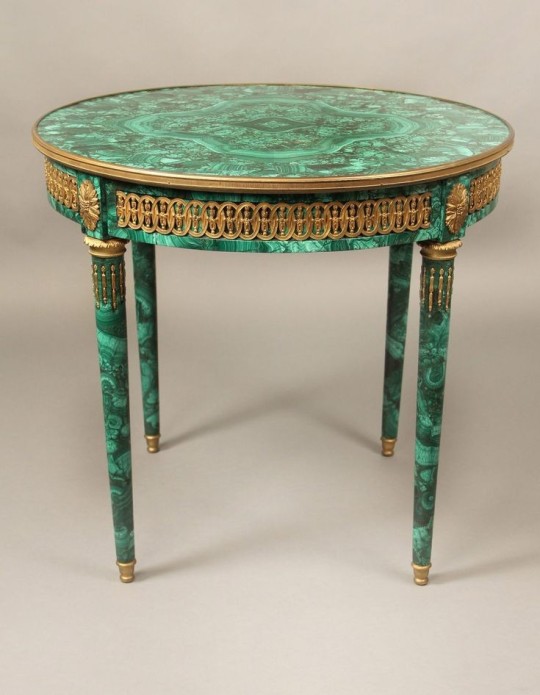

#furniture#vintage furniture#louis xvi#malachite#semi precious stones#bronze#18th century#19th century#furnishings#antique furniture#louis xv of france#russian empire#russian nobility#tsardom of russia#fine art#elegance#russian art#french art
368 notes
·
View notes
Text
Louis XV's royal clutter

Castles opened to the public tend to put a great emphasis on furnitures, paintings and panellings. This focus often occurs at the expense of smaller every day items, such as tools, services, boxes and so on.
Even as far back as the 18th century, inventories of the garde meuble- the administration in charge of the French royal furnitures and collections- often omitted those smaller items, in favour of a greater focus on the furnitures themselves.
Several exception that that rule do exist for instance :
When King Louis XV died the 10th of May 1774 in Versailles, his Versailles private cabinets were opened and searched, all the cash and the precious items contained in his cupboards were listed and described in an inventory made 27 days after his death.
Said inventory isn't located in the documents of the House of King(O1 series of the french national archives) like it is usually the case, but in the King's papers, namely in the K series of the national archives, more specifically the K 153.
The document in question was never published nor translated to this date.
I decided to publish it for the first time and translate it entirely to give an idea of the of the kind of clutter that was present in the king's private cabinets in Versailles at the time of his death :
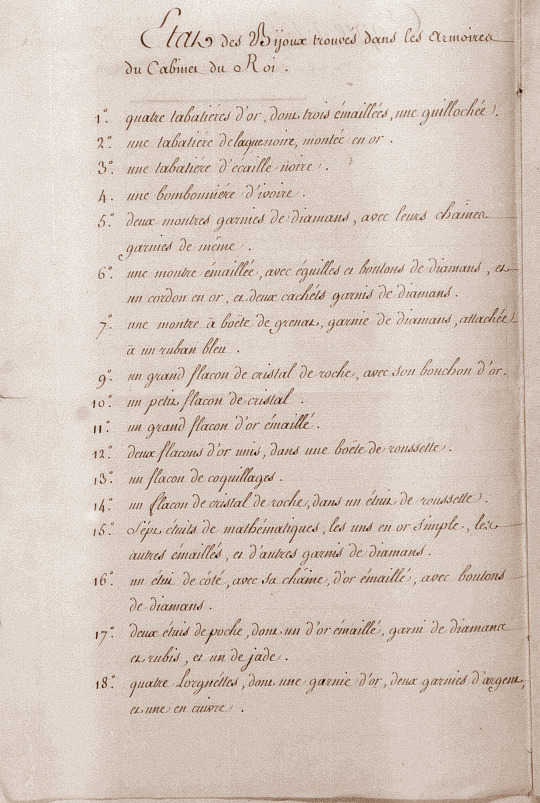
Here is the translation of the provided text into English:
1: Four gold snuffboxes, three enameled, one guilloché,
2: A black lacquer snuffbox mounted in gold,
3: A snuffbox of black tortoiseshell.
4: An ivory candy box.
5: Two watches encrusted with diamonds with their chains also adorned with diamonds
6: An enameled watch with diamond hands and button, a gold cord, and two seals encrusted with diamonds,
7: A garnet box watch adorned with diamonds, attached with a blue ribbon,
9: A large rock crystal flask with a gold stopper, and two seals encrusted with diamonds
10: A small crystal flask
11: A large enameled gold flask
12: Two plain gold flasks in a roussette box
13: A shell flask
14: A rock crystal flask in a roussette case
15: Seven math instrument cases, some in plain gold, others enameled, and some encrusted with diamonds
16: A side case with an enameled gold chain but with diamond buttons
17: Two pocket cases, one enameled gold adorned with diamonds and rubies, and one in jade
18: Four lorgnettes - two in gold, two in silver, and one in copper

19: Two pencil cases, one enameled gold adorned with diamonds, the other containing a compass
20: A Baradel in gold
21: A small portable silver barometer
22: Four tablets in gold, lacquer, or Burgos, one of tortoiseshell with diamond cyphers
23: Three souvenirs, one of enameled gold
24: A hunting knife with a gold handle
25: A dog collar with diamond initials.
26: A large lacquer tablet containing eight portraits of the royal family adorned in gold
27: A lacquer tablet with a portrait inside
28: Four portraits in three plain boxes
29: An ivory barrel adorned with gold
30: A piece of jade from the Amazon River
31: A Sèvres porcelain lorgnette
32: A gold and Magellan telescope
33: A porcelain Sèvres eyewash basin
34: A small red leather writing set adorned with gold, with a gold seal and pencil
35: A damask pruning knife
36: A double-bladed mother-of-pearl knife with a gold fleur-de-lys
37: Three glasses cases, one of tortoiseshell adorned with gold
38: An approaching eyeglass adorned with silver
39: A watch with its chain and seals, all in rubies and diamonds
41: A mathematics case in yellow lacquer with diamond buttons

42: Two almanacs mounted in silver and marcasites in their roussette cases
45: Three seals, two in gold, one in stone
47: Four rings, three with diamonds or coloured stones, one with an engraved stone
48: An English lorgnette
49: Four canes - one with a gold handle, one with a porcelain crutch, one with a gold apple adorned with diamonds, one with a golden apple-wood handle and parasol
50: Six watches - one in gold, enameled with a steel chain and chime, two other enameled, three other guilloché gold
51: A steel mirror
52: A gold egg cup in a roussette case
53: A gold writing set with Charlier paintings, in miniature in a roussette case
54: A very beautiful crystal vase, measuring 9 inches in height
55: A gold breakfast set consisting of a Sevres porcelain tray, two identical cups, a gold teapot and sugar pot, two spoons, a strainer, and a sugar tong made of the same metal
56: A gold-enameled punch pot with a pump, and a second pot of Saxony porcelain
57: A small enameled gold punch pot with a pump and a crystal basin
58: Two gold-enameled candlesticks with their bobeches
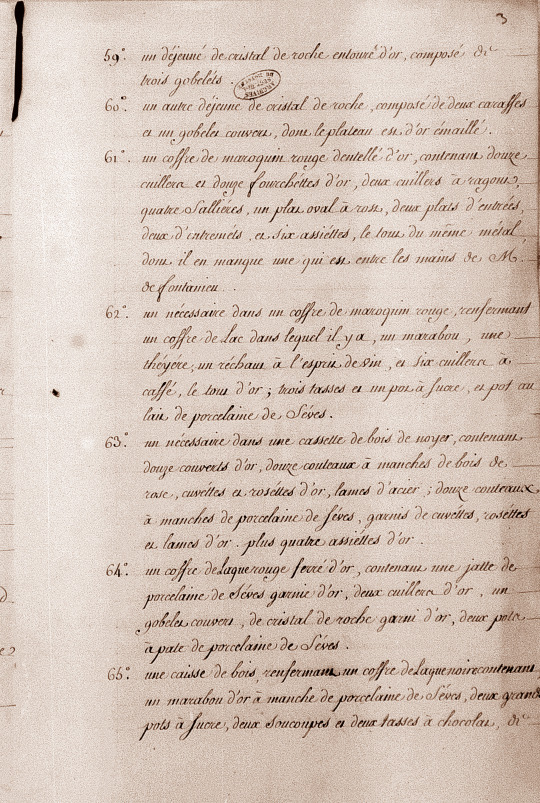
59: A crystal breakfast set surrounded by gold, consisting of three goblets
60: Another crystal breakfast set consisting of two carafes and a covered goblet, with the tray of enameled gold
61: A red leather box, edged with gold, containing 12 gold spoons and 12 gold forks, two roast oval plates, two appetizer plates, two dessert plates, and six dishes, all made of the same metal, with one missing, which is in the possession of Mr. de Fontanieu.
62: A set in a red leather box containing a lacquer box with a marabout, a teapot, a spirit lamp, six coffee spoons, all made of gold, three cups, a sugar pot, and a milk jug made of Sevres porcelain
63: A set in a walnut wood box containing 12 gold tableware, twelve knives with rosewood handles, gold cup and rosette, steel blades, twelve knives with Sevres porcelain handles adorned with cup rosette landau, plus four gold plates
64: A red lacquer box reinforced with gold, containing a Sevres porcelain bowl adorned with gold, two gold spoons, a covered crystal goblet adorned with gold, two porcelain pasta pots from Sevres
65: A wooden case enclosed in a black lacquer box containing a marabout made of gold with handles made of Sevres porcelain, two large sugar pots, two saucers, and two chocolate cups made of porcelain, a spirit lamp, adorned with gold, a square crystal flask adorned with gold, two coffee spoons, and a large gold spoon

66: A gold-plated copper microscope in its pyramid case
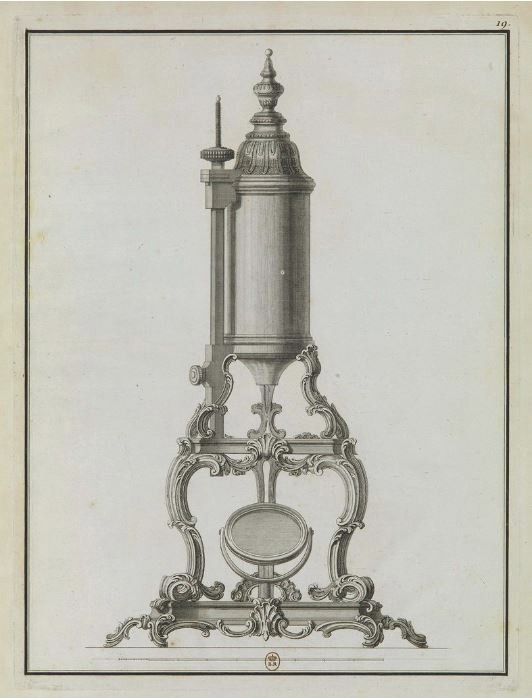
Dom Noël, Planche 19 Microscope tripode.
67: A writing set with 12 zodiac signs
68: A wooden box reinforced with silver containing a pharmacy adorned with silver
69: A yellow lacquer box enclosed in a red leather box
70: A graphometer in a red leather case
71: A gold compass with its stand and a level in a sharkskin case
72: A black lacquer box
73: A breakfast set consisting of a painted sheet metal tray and two porcelain cups
74: A writing set made of silver-reinforced roussette
75: Supplementary gold tableware, three coffee spoons, one tea spoon, a gold set in a roussette case
76: A small black lacquer box
77: A small oak chest, we weren't able to find the key
78: A box of tools with wooden handles and silver ferrules
79: A box of Kingswood,but the key wasn't found
80: A gold-braided telescope
81: A coffee pot for four gold cups with jasper handles and six gold coffee spoons, in a leather case made to contain 12.
#historical research#historical#history#rococo#18th century#Versailles#louis xv of france#Louis XV#palace of versailles
56 notes
·
View notes
Text
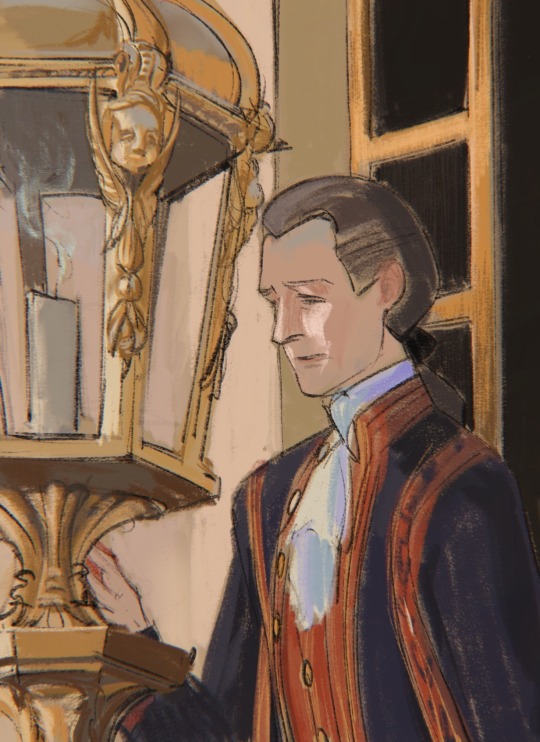
#jeanne du barry#art#drawing main characters?#was never an option#this guy deserves all the love#de la borde#louis xv of france#artists on tumblr#history
55 notes
·
View notes
Text
꧁ "This, Madame, is Versailles" ꧂
⚜️♕⚜️
Vídeo de ©Antoine
Música del vídeo, Las cuatro estaciones. Invierno.... Antonio Vivaldi
#chateaudeversailles#versalles#palace#chateau#france#marie antoinette#heritage#historic places#european#royal palace#18th century#siglo xviii#icu architecture#rococó#architectedinterieur#architecturephotography#french castle#louis xv of france#french aristocracy#opulence#french culture#classic style#elegant style#elegance#passion
109 notes
·
View notes
Text

Louis XV in Coronation Robes by Louis-Michel van Loo, 1760.
#classic art#painting#louis michel van loo#french artist#18th century#portrait#male portrait#indoor portrait#louis xv of france#king#house of bourbon#coronation robes#chair#palatial interior
11 notes
·
View notes
Text

A direct quote from the king 😉🤣
#manga#innocent manga#manga art#manga panel#french#madame du barry#louis xv of france#innocent rouge#jeanne du barry
31 notes
·
View notes
Text

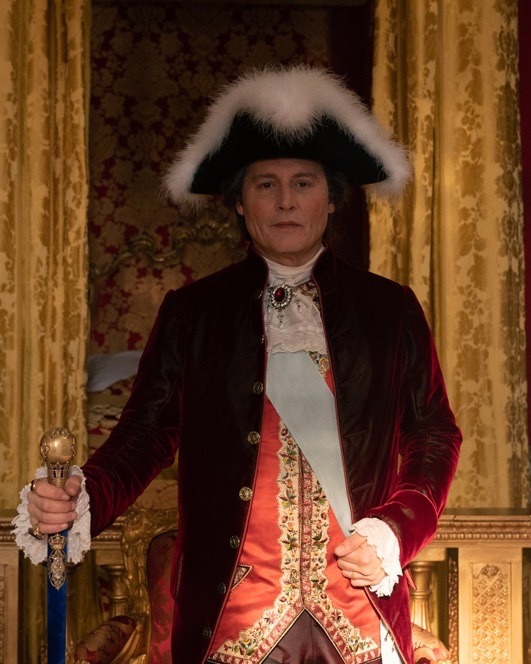
Johnny Depp as Louis XV for his new movie “Jeanne Du Barry”.
#johnny depp#justice for johnny depp#justicematters#jack sparrow#edward scissorhands#love#louis xv of france#louis xvi
66 notes
·
View notes
Text
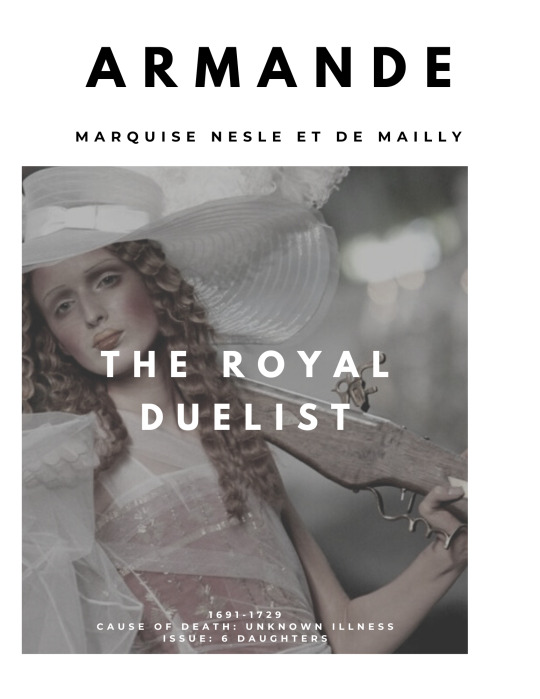




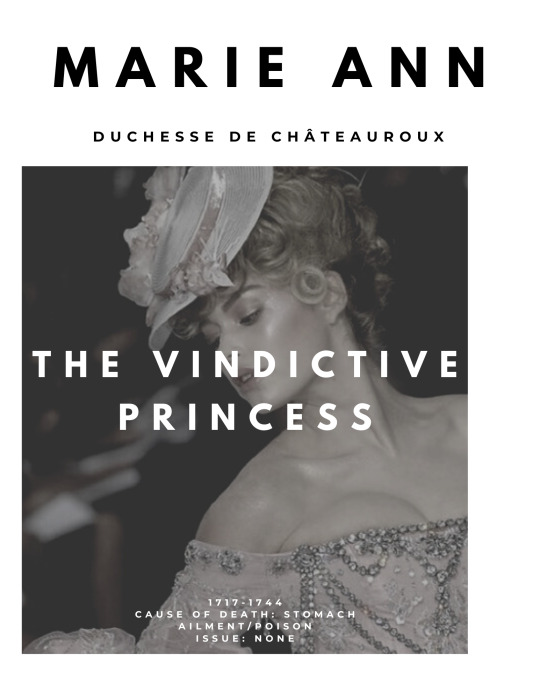
Notorious Women - The de Nesle Women
It is perhaps unsurprising that the daughters of Armande Félice de La Porte Mazarin would go on to live equally infamous lives. Armande was well-known throughout the French aristocracy for challenging the Vicomtesse de Polignac to a duel for daring to sleep with her lover. Of her six daughters, four would go on to become the mistress to Louis XV. Though the sisters were once close in their youth, jealousy would ultimately tear them apart. The tension came to a head when Marie Ann forced the King to banish her sister, Louise, from court. Before retiring to a convent , Louise, was last seen on her knees begging the Louis XV to reconsider. Marie Ann would later face criticism for reportedly forcing her sister, Diane, to participate in three ways with herself and the King.
#historicwomendaily#the de nesle sisters#louis xv of france#french history#women of history#royal mistress#aesthetic#my#my aesthetic post
53 notes
·
View notes
Text
Louis XV
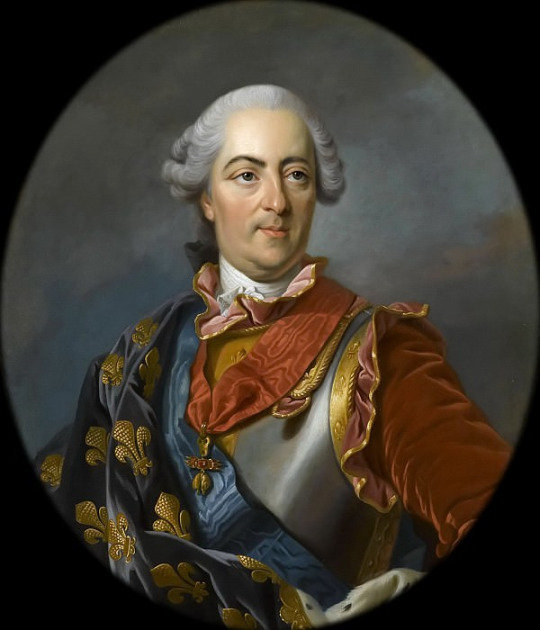
King of France 1715-1774
Married Marie Leszczynska (1725-1768) and children Louis Dauphin of France, Louise Élisabeth, Madame Adélaïde
5 notes
·
View notes
Text


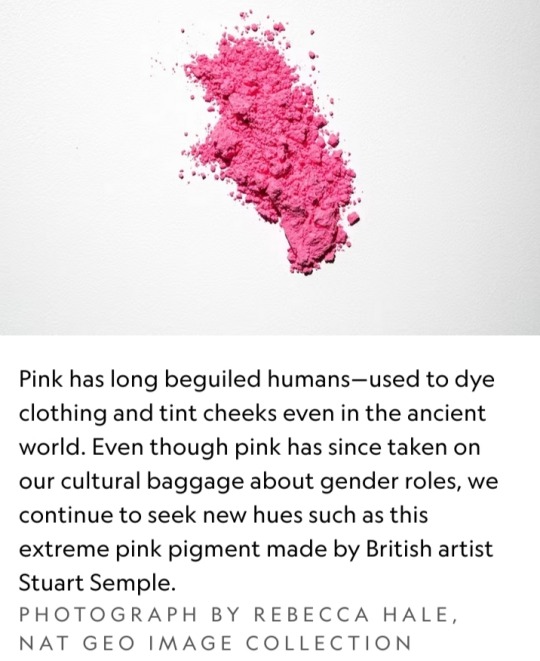
Could pink be Earth’s oldest color? That’s the implication of a 2018 study that found bright-pink pigments in 1.1 billion-year-old rocks — thanks to the fossils of the billions of tiny cyanobacteria that once dominated oceans.
The natural world has long been painted with every permutation of pink — whether embedded deep in ancient rock, sported by shrimp-hungry flamingoes, or simply lining the shores of Bermuda’s pink-sand beaches.
And yet the color carries a lot of cultural baggage.
As pink made the jump from nature’s palette to human adornment, it gathered connotations of colonialism, beauty, power, and gender.
How did pink become such a cultural flashpoint? As the world takes a revitalized interest in the hot-pink planet inhabited by Barbie, here’s a short history of the compelling color.
Admiration for pink in the ancient world
Early humans quickly transitioned from admiring pink in the natural world to attempting to wear it.
For example, in the Andes Mountains about 9,000 years ago, fierce hunters in what is now Peru wore tailored leather clothing with a pink hue thanks to red ochre, an iron oxide pigment that is one of the oldest natural pigments used by humans.
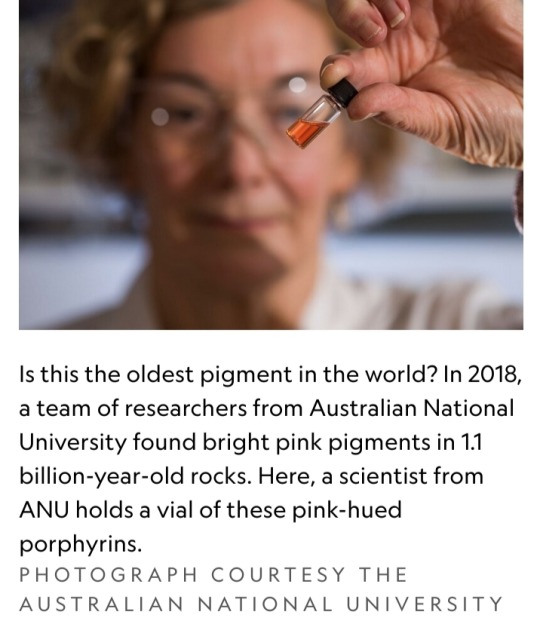
Humans weren’t content just to smear this pigment on cave walls or use it while tanning their leather garments.
As far back as ancient Egypt, humans used ochre to tint their lips and cheeks.
When applied to human skin, the red pigment created a blush-like pink that onlookers associated with love, sexuality, and beauty.
Lookalike concoctions prevailed around the world, employing everything from crushed strawberries to red amaranth.
The color of cosmetics—and colonialism
Though the word’s etymology is unknown, the word “pink” was used to describe the color in the 18th century.
By then, pink had become inextricably tied with colonialism — as demand for the pigment for cosmetics drove Europeans to harvest natural resources in other parts of the world.
For example, in a bid to make pinkish pigments from the bark and red sap of brazilwood trees, European traders forced enslaved workers to cut down so many of Brazil’s eponymous trees that the country was left deforested and the tree nearly driven extinct.
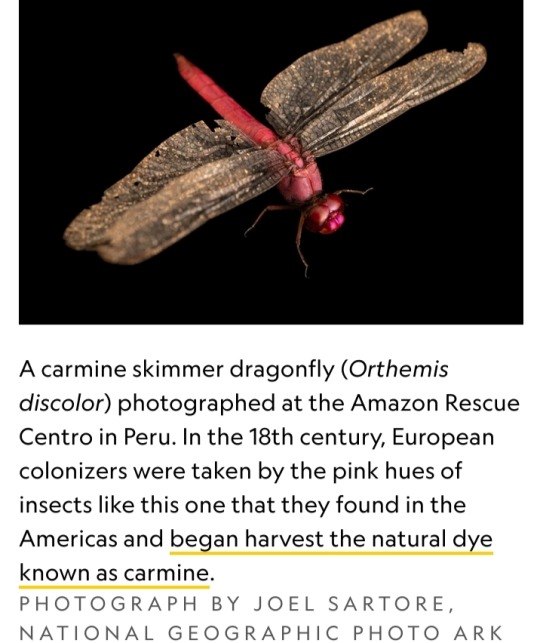
During this Era of Exploration, consumers also got their pink cheeks and lips from other pigments like carmine, derived from cochineal insects harvested in Central and South America under similar conditions.
Meanwhile, the color also had a more literal association with colonialism:
During this time, the British Empire grew so massive that the color pink — which mapmakers used to mark its territories worldwide — dominated the world map.
Pink becomes a bona fide fashion craze
As red tints became more accessible and cheaper, 18th-century European aristocrats indulged a passion for pink.
Art historian Michel Pastoureau writes that “the most privileged classes of European society wanted pastels, halftones, and the newest innovations in color shades in order to distinguish themselves from the middle classes, who now had access to bright, strong, and reliable colors.”
Madame de Pompadour, the mistress of Louis XV of France during the 1740s and 1750s, used the color as a signature.
The artists who painted her and created fine objects for her many homes used pink in all their designs, even her carriages, and she helped further popularize the hue throughout Europe.
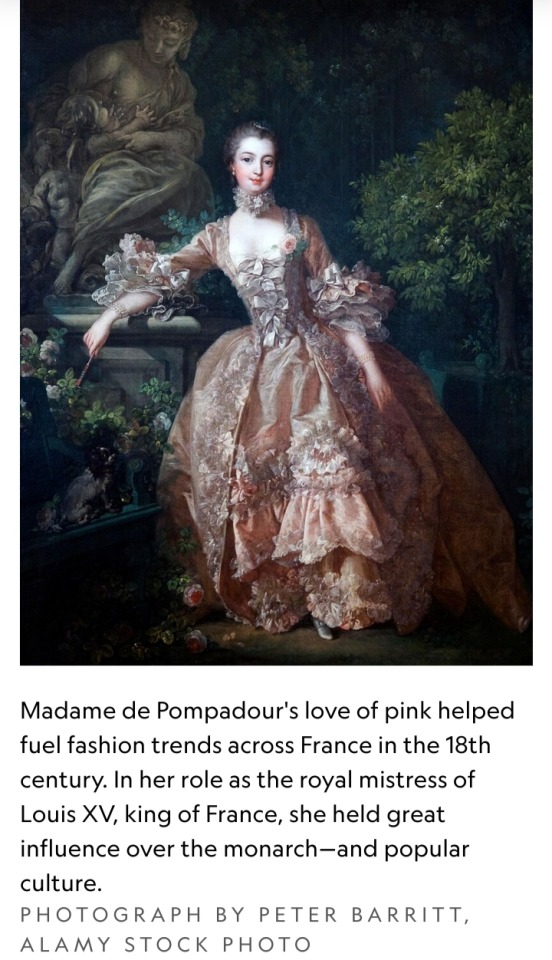
The emergence of synthetic dyes in the mid-19th century — which gave rise to the purple-pink color known as mauve — made pink more accessible than ever before.
By the 1930s, bright pink had become a bona fide fashion craze.
Avant-garde fashion designer Elsa Schiaparelli made “shocking pink” her signature color, helping spread the vogue for women’s wear.
It worked: By 1935, even local newspapers like the News and Observer in Raleigh, North Carolina, were declaring that “PINK IS FAVORITE.”
And in 1939, a royal commentator wrote in London’s Daily Telegraph that pink was so popular, it was nearly ubiquitous for both bridesmaids and debutantes.
“So general is the pink craze,” the paper wrote, “that some women are rebelling against it.”
Pink is for…boys?
Around the same time, pink gained relevance in another realm: baby fashion.
Gender and baby fashion had intersected for years; around World War I, etiquette guides and fashion advice columns began advising that mothers dress their children in clothing with gender-specific hues.
But which colors? A 1927 retailer survey on infant clothing colors published in TIME shows a split nation, with retailers like Filene’s and Marshall Field’s recommending pink for boys, but Macy’s, Bullock’s, and others claiming pink was best for girls.
By the 1960s, however, mothers began buying pink clothing for their female babies, dressing their male children in pastel blues.
“None of this transition happened by childcare expert fiat or industry proclamation,” writes historian Jo B. Paoletti.
Instead, pink gained steam as a signifier of a baby’s female sex as part of a post-World War II push to reinforce traditional gender roles in American homes — and the realization by retailers that they could make more money that way.

“The more baby clothing could be designed for an individual child — and sex was the easiest and most obvious way to distinguish babies — the harder it would be for parents to hand down clothing from one child to the next, and the more clothing they would have to buy as their family grew,” Paoletti writes.
Soon, retailers featured entire “pink aisles” packed with pink-colored clothing and toys for tiny consumers.
The dark side of pink
Pink was also rejected by some as a symbol of weakness or even sinister intent.
In Nazi Germany, for example, the color was used to brand gay men in concentration and death camps.
As the Cold War emerged, suspected Communist sympathizers were given the derogatory name of “pinkos” — a term that referred to a person with “red” tendencies toward radical politics.
Meanwhile, members of the women’s liberation movement attempted to distance themselves from a color that had become inextricably linked with femininity and sexuality — think: Marilyn Monroe slinking down a staircase in a shocking pink gown, surrounded by tuxedoed men.
Anti-feminists, meanwhile, embraced pink.
Author Helen B. Andelin, for example, made public appearances in all-pink ensembles in the 1960s and 1970s during lectures encouraging women to abandon feminism and embrace lives as housewives.
Reclaiming pink
Pink remains associated with femininity to this day — but in recent decades, groups once disdainfully branded with the color have made moves to reclaim it.
In the LGBTQ community, for example, people who were once forced to wear pink as outcasts have adopted the hue as a symbol of their movement for social justice.
In 1987, the AIDS Coalition to Unleash Power (ACT UP) adopted a bubble-gum pink triangle in its “Silence = Death” campaign to increase awareness of HIV-AIDS and destigmatize the disease.
It was just one example of pink being used to represent gay pride.
Some feminists have also reclaimed the color, fighting gender stereotypes with a tongue-in-cheek adoption of all shades of rose, fuchsia, and bubble-gum pink.
At the 2017 Women’s March, for example, a sea of protesters wearing pink, cat-eared “pussy hats” protested the inauguration of U.S. President Donald Trump, whose lewd remarks about female genitalia during a leaked interview drew worldwide condemnation.
Today, pink is what you make of it — and it has grown in popularity once more.
In 2016, Pantone announced that a shade of dusty pink — dubbed Millennial Pink for the generation that had embraced it—was its Color of the Year.

This year, Greta Gerwig’s upcoming Barbie movie helped fuel the rise of the pink-drenched “Barbiecore” aesthetic, inspiring admirers to saturate their homes and wardrobes with every shade of pink.
According to Axios, searches for the term “Barbiecore aesthetic room” rose over 1,000 percent between May 2022 and May 2023, reflecting consumers’ craving for as-pink-as-possible interiors.
There’s no telling which permutation of pink will captivate us next — but given the colorful history of the hues that fall somewhere between white and red, pink’s next heyday is probably right around the corner.

Barbie would approve of the pink petals on this beach morning glory.
Pink flowers like this one get their rosy tinge from a group of biological pigments called anthocyanins, which attract pollinators — and human admirers — to colors ranging from the palest carnation to the most ostentatious tropical fuchsia.
#pink#red ochre#carmine#Era of Exploration#Madame de Pompadour#Louis XV of France#mauve#Elsa Schiaparelli#gender#baby fashion#colors#Helen B. Andelin#AIDS Coalition to Unleash Power (ACT UP)#Pantone#Millennial Pink#Barbie#Nat Geo#fashion#political movement#Marilyn Monroe#Zsa Zsa Gabor#pigment
10 notes
·
View notes
Text
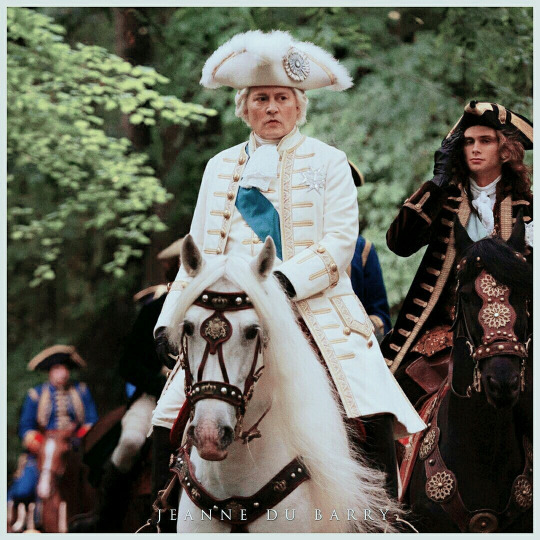
The only King I care about.
18 notes
·
View notes
Text

King Louis XV of France known as the Beloved, painting by Hyacinthe Rigaud
#kingdom of france#royal#louis xv of france#king of france#18th century#painting#art#royal portraits#french school#oil on canvas
170 notes
·
View notes
Text
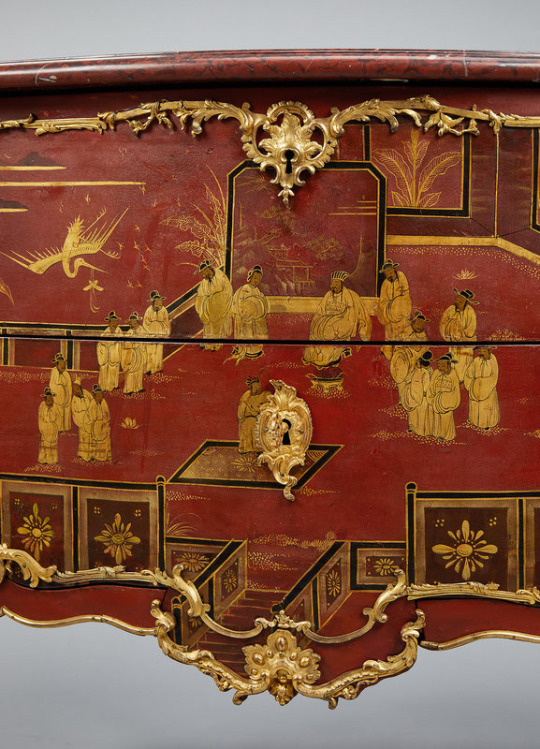



Two Exceptional Louis XV Period Commodes Stamped by Bernard II Vanrisamburgh and Adorned with Chinoiseries Executed in Red and Gold Martin Varnish., c. 1750-1755, Louis XV period. Oak carcass; red and gold Martin varnish; gilded bronze; red Griotte marble.
Courtesy Alain Truong
11 notes
·
View notes
Text
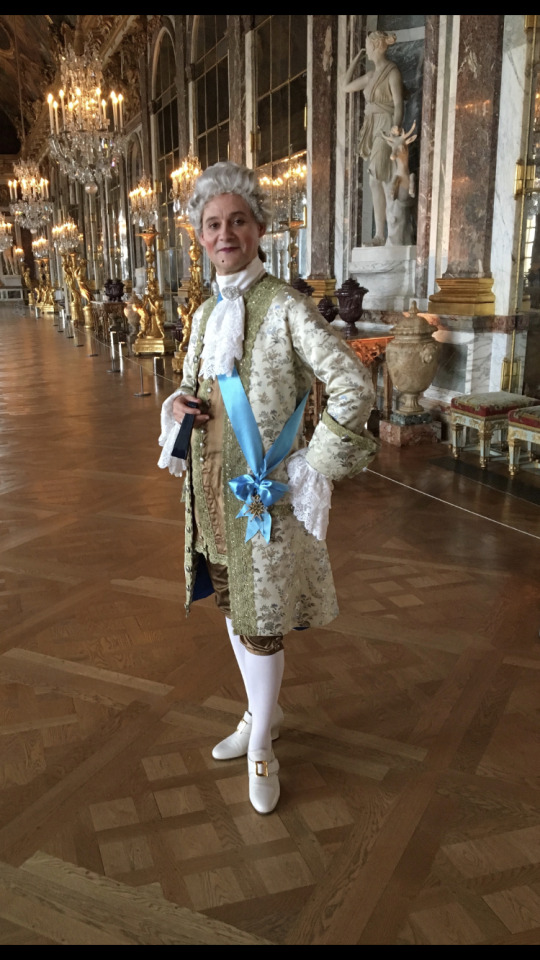
6 notes
·
View notes
Text
Here is the post about Charles-André van Loo. A shorter version.

His painting - Perseus and Andromeda
Carle or Charles-André van Loo ( 15 February 1705 – 15 July 1765) was the most famous member of the successful dynasty of painters of Dutch origin. His oeuvre includes every category: religion, history painting, mythology, portraiture, allegory, and genre scenes.
He was born in Nice, then part of the Duchy of Savoy. Van Loo followed his brother Jean-Baptiste (the guy from my previous post) to Turin, and then to Rome in 1712, where he studied under Benedetto Luti and the sculptor Pierre Le Gros. After leaving Italy in 1723, he worked in Paris, studied at the Académie Royale, where he gained first prize for drawing in 1723, and received the first prize for historical painting in 1727—as did his future rival François Boucher. In 1724 he won the Prix de Rome (a French scholarship for arts students, that was established in 1663 during the reign of Louis XIV of France. Winners were allowed them to stay in Rome for three to five years at the expense of the state). After again visiting Turin in 1727, he was employed by king Victor Amadeus II of Sardinia. In 1734 he settled in Paris, and in 1735 became a member of the Académie royale de peinture et de sculpture and rose rapidly in the hierarchy of the academy. Madame de Pompadour and the French court were taking the artist under their patronage. He was decorated with the Order of Saint Michael and named First Painter to king Louis XV of France in 1762.He was a most successful court painter but his portraits as well as history paintings also enjoyed an enormous success throughout all Europe. He died in Paris on 15 July 1765.
Some of his portraits:
Marie Leczinska, Queen of France

Louis XV, king of France

Madame de Pompadour

#new post#historical fashion#artwork#art#painter#oil painting#oil on canvas#portrait#queen of france#king of france#madame de pompadour#marie leczinska#louis xv of france#perseus#perseus and andromeda#historical#history#art history#dutch painter#Nice#new to tumblr#dress#period piece#period drama#Rome#royals#royal style#royalty#palace of versailles#versailles
10 notes
·
View notes
Text

In celebration of the 300th anniversary of the coronation of the boy King Louis XV in 1722 and the splendid exhibition dedicated to the "Bien-Aimé" in château de Versailles, I made this very illustration. 😊
Louis XV is one of my favourite historical personages.✨
#illustration#louis xv of france#louis xv#18th century history#18th century#18th century france#boy king#crowning#crown#monogram#royal#king#king of france#france#history of france
12 notes
·
View notes